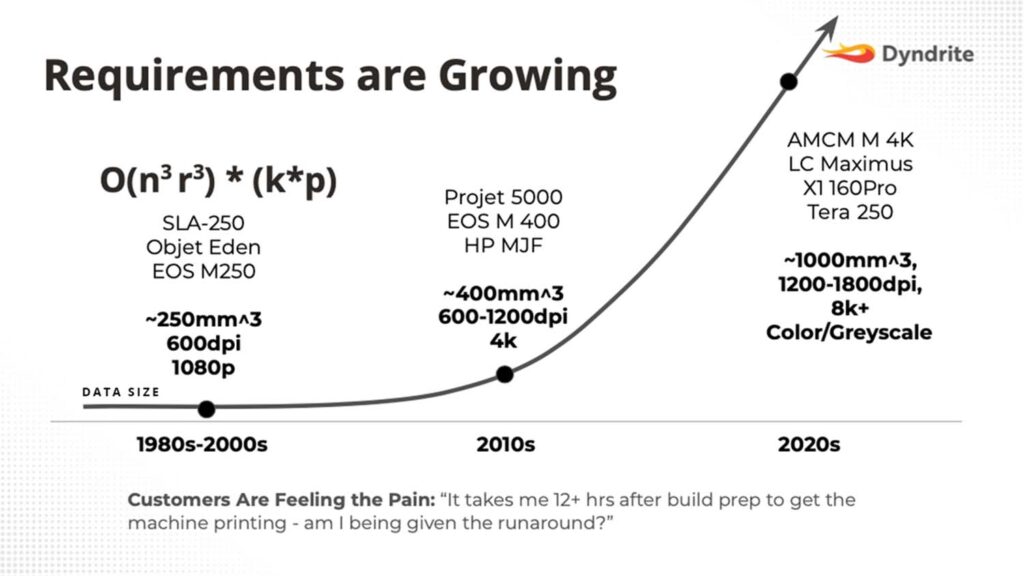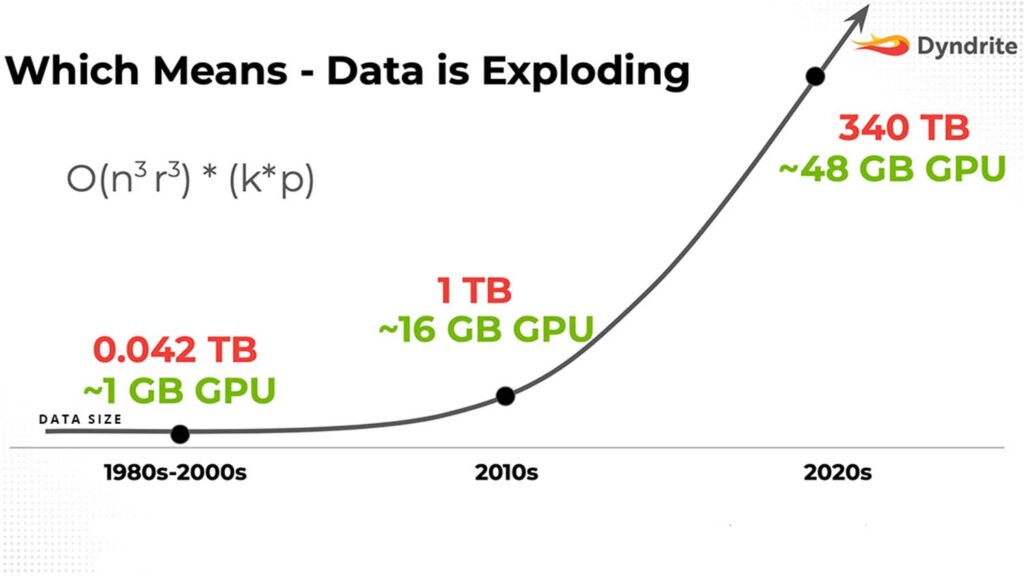Existing legacy software is killing additive manufacturing one long prep job at a time, says Dyndrite CEO Harshil Goel. He believes it’s time for an accelerated pipeline for 3D printing, and believes Dyndrite has it
Every year 3D print builds grow in size and complexity. New printers offer increased resolution, accept more metadata, and are capable of more complex toolpathing.
As a result engineers are designing far bigger and/or more complex parts. Users expect to nest more and more parts within a build.
As a result, file sizes are exploding. Soon the data load will be terabytes per model. Designers and engineers already know the pain of hours and days spent simply preparing their 3D print builds and the tedium of slicing the data for print.
If things continue as-is, that pain and tedium will become unbearable and rob users of the ROI needed for key application use cases.
In the face of all this rapid growth in capabilities and datasets, the additive manufacturing industry is still deeply entrenched in legacy software and antiquated, manual workflows that cannot leverage modern computing technology. No ability to use GPUs, no ability for direct or automated CAD-to-print workflows.
Dyndrite offers the Accelerated Computation Engine, a new software foundation to build industrial-grade additive manufacturing hardware and software. This new engine brings new power to additive and it enables the development of a Digital Front End for additive. We believe it will deliver a revolution similar to what PostScript created for 2D printing.
The idea of a Digital Front End started with the automation of document and graphics printing in the 1980s. The PostScript data format gave the world a standard language for turning complex graphics and text into printed documents.
A PostScript-based print engine (Raster Image Processor) was embedded in each new PostScript printer.
The combination of new graphics design software and the new PostScript print engine revolutionized 2D printing, and the world has never looked back.
Dyndrite technology enables native CAD-to-print output for any 3D print process, raster or vector. It uses new powerful GPUs to scale these increasingly complex projects.
OEM vendors can take advantage of the engine’s extensibility to write machine-specific extensions, that protect their IP.
End users can quickly develop custom scripts to automate and control workflows. Users can design state-of-the-art custom toolpaths for additive manufacturing workflows, improving productivity and repeatability.
Existing legacy software is killing additive manufacturing one long prep job at a time. It is time for an accelerated raster pipeline for 3D printing, and Dyndrite has it.
You can see more about the need for a Digital Front End at Dyndrite Developer Conference 2021, being held on 20-21 April. Find out more and register for the online event here.








